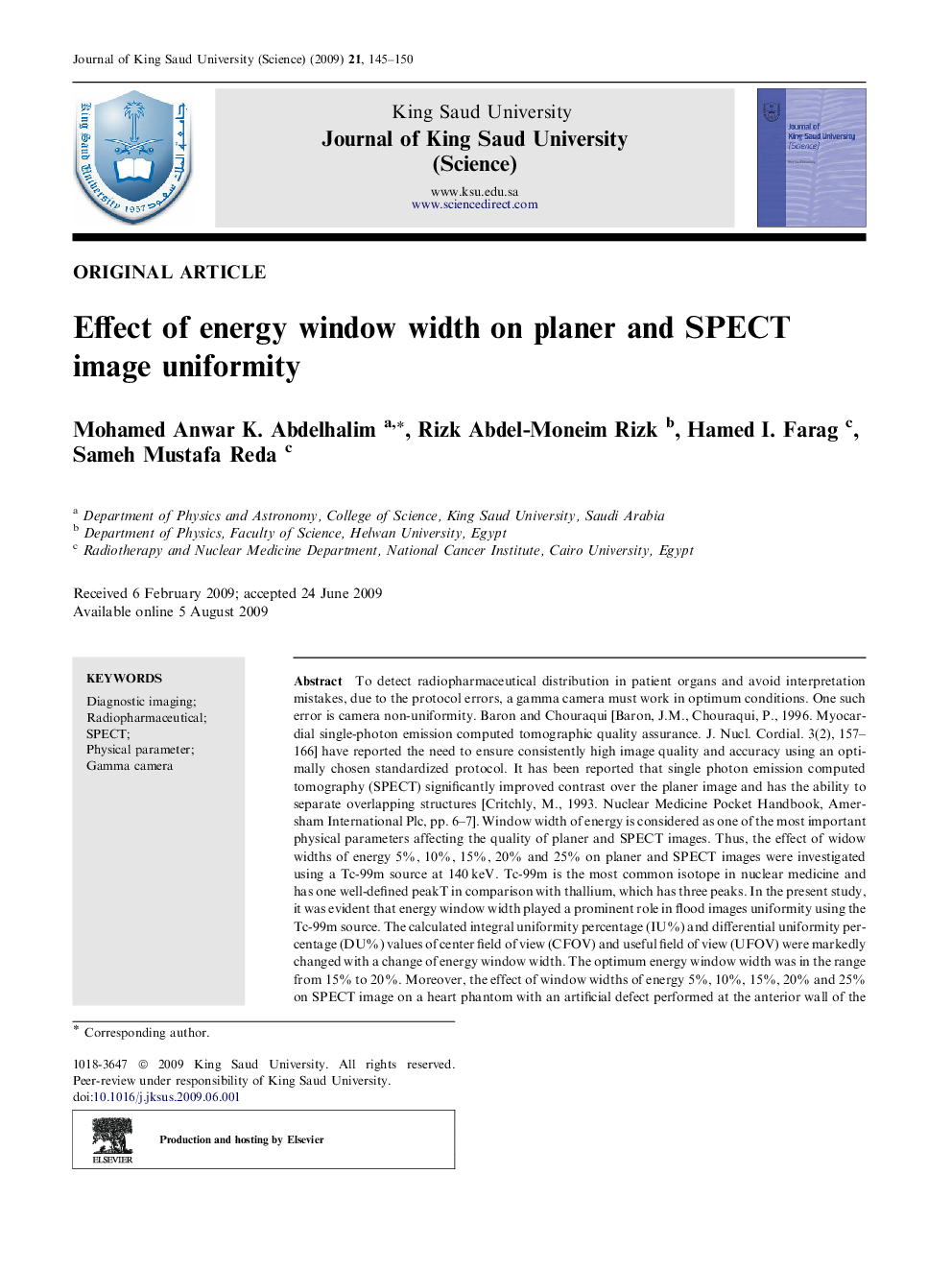| Article ID | Journal | Published Year | Pages | File Type |
|---|---|---|---|---|
| 827579 | Journal of King Saud University - Science | 2009 | 6 Pages |
To detect radiopharmaceutical distribution in patient organs and avoid interpretation mistakes, due to the protocol errors, a gamma camera must work in optimum conditions. One such error is camera non-uniformity. Baron and Chouraqui[Baron, J.M., Chouraqui, P., 1996. Myocardial single-photon emission computed tomographic quality assurance. J. Nucl. Cordial. 3(2), 157–166] have reported the need to ensure consistently high image quality and accuracy using an optimally chosen standardized protocol. It has been reported that single photon emission computed tomography (SPECT) significantly improved contrast over the planer image and has the ability to separate overlapping structures[Critchly, M., 1993. Nuclear Medicine Pocket Handbook, Amersham International Plc, pp. 6–7]. Window width of energy is considered as one of the most important physical parameters affecting the quality of planer and SPECT images. Thus, the effect of widow widths of energy 5%, 10%, 15%, 20% and 25% on planer and SPECT images were investigated using a Tc-99m source at 140 keV. Tc-99m is the most common isotope in nuclear medicine and has one well-defined peakT in comparison with thallium, which has three peaks. In the present study, it was evident that energy window width played a prominent role in flood images uniformity using the Tc-99m source. The calculated integral uniformity percentage (IU%) and differential uniformity percentage (DU%) values of center field of view (CFOV) and useful field of view (UFOV) were markedly changed with a change of energy window width. The optimum energy window width was in the range from 15% to 20%. Moreover, the effect of window widths of energy 5%, 10%, 15%, 20% and 25% on SPECT image on a heart phantom with an artificial defect performed at the anterior wall of the heart was investigated. The SPECT images were clinically examined by a physician who reported a different diagnosis for each energy window width due to vertical long axis cuts, which, in turn, were due to the change in the collected counts. We concluded that the optimum energy window width was also in the range 15–20% for the Tc-99m isotope, which confirmed previous planer results.
